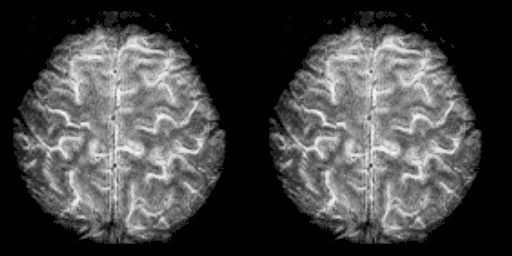Fișier:High Resolution FMRI of the Human Brain.gif
High_Resolution_FMRI_of_the_Human_Brain.gif (512 × 256 pixeli, mărime fișier: 1,06 MB, tip MIME: image/gif, în buclă, 114 imagini, 23 s)
Istoricul fișierului
Apăsați pe Data și ora pentru a vedea versiunea trimisă atunci.
| Data și ora | Miniatură | Dimensiuni | Utilizator | Comentariu | |
|---|---|---|---|---|---|
| actuală | 23 octombrie 2005 14:47 |  | 512x256 (1,06 MB) | Lipothymia | High Resolution FMRI of the Human BrainDocument Actions 1 mm cubical voxels at 3 Tesla The following images show the results from two functional MRI experiments: The first with voxel dimensions 1x1x10 mm**3 and 1 slice; The second with voxel dimensions |
Utilizarea fișierului
Următoarele pagini conțin această imagine:
Utilizarea globală a fișierului
Următoarele alte proiecte wiki folosesc acest fișier:
- Utilizare la en.wikipedia.org
- Utilizare la en.wikiversity.org
- Utilizare la hu.wikipedia.org
- Utilizare la sr.wikipedia.org
- Utilizare la uk.wikipedia.org


